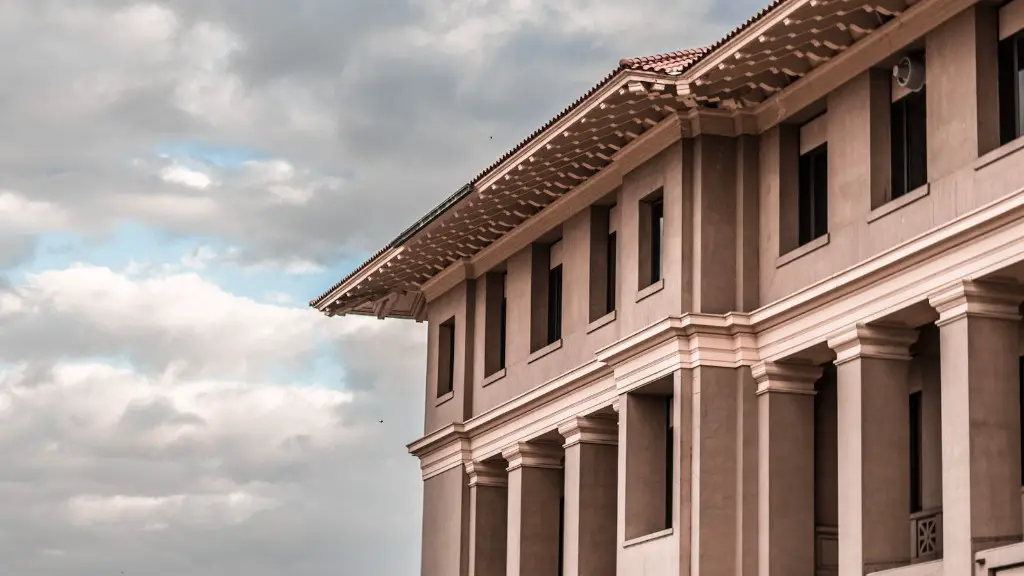Architecture is a significant reflection of the culture and values of any society. Ancient Greece is considered by many to be the cradle of Western civilisation and its architecture has had a significant influence on subsequent styles. From the grandiose temples of the Acropolis to the beautifully proportioned Parthenon, Greek architecture is characterised by its simplicity, harmony and clarity of form. These same qualities can be seen in many of the world’s most iconic buildings, such as the United States Capitol and the Lincoln Memorial, which both reflect the influence of ancient Greek architecture. Today, the principles of Greek architecture are still evident in many modern buildings and continue to inspire architects around the world.
There are many ways in which ancient Greek architecture influences us today. One way is in the way we think about and design public spaces. The Greek agora, or marketplace, is one of the earliest examples of a public space. This open space was used for a variety of activities, including political discussion and debate. The design of the agora influenced the way we think about and design public spaces today.
Another way in which ancient Greek architecture influences us today is in the way we think about and use columns and other architectural elements. The Greek orders of architecture – Doric, Ionic, and Corinthian – are still used today in a variety of ways. Columns are a particularly prominent feature of Greek architecture, and we often see them used in modern architecture as well.
Overall, ancient Greek architecture continues to influence us in many ways. From the way we design public spaces to the way we use columns and other architectural elements, the legacy of ancient Greek architecture is still very much with us today.
What are influences of Greek architecture in modern world?
Ancient Greece has had a profound influence on world architecture. Many architectural movements throughout history have been inspired by the Classical style of Greece, particularly the orders of Doric, Ionic, and Corinthian. Many of the world’s most iconic buildings and structures were inspired by Ancient Greek architecture, and the legacy of Greece can be seen in architectural masterpieces around the world.
Greek architecture has had a profound impact on the development of Western architecture. Their formulas for proportions and aesthetics have been influential for centuries, and continue to inspire modern architects. Greek architecture is characterized by its harmony, simplicity and beauty, which are all qualities that are highly valued in the Western world.
How does Greek influence us today
Alexander the Great was one of the most successful military commanders in history. He was also a very effective ruler and his legacy can be seen in many different ways. One of the most significant ways is in the influence of Greek culture on the modern world.
Greek ideas and concepts have shaped our thinking in many different areas, from mathematics and science to art and architecture. The alphabet we use today is based on the Greek alphabet, and hundreds of words in our language come from Greek roots.
So next time you’re doing maths, or enjoying a work of art, remember that you’re using ideas that are thousands of years old – and all thanks to a young king called Alexander.
The ancient Greeks were an incredibly influential people. They made significant contributions to philosophy, mathematics, astronomy, and medicine. They were also known for their impressive literature and theatre, which has had a lasting impact on modern drama. And, of course, the Greeks were renowned for their stunning sculpture and architecture. All of these aspects of Greek culture have had a profound and lasting influence on the world.
Where is Greek architecture used today?
Greek architecture has been a major influence on modern architecture, especially in democratic societies. The Oslo Trading Building in Norway, the columned porches of plantations in the South and the Ionic order columns that flank the Chamber of Commerce in Dougherty County, Georgia, are a few examples of how Greek architecture finds its way into modern buildings meant to impress an idea of democracy, power and respect.
Greek architecture is still widely used today in many different types of buildings. The use of marble, limestone and columns are still used in Greek architecture and add a lot of beauty and grandeur to the buildings. Notable ways in which we still use Greek style include columns, friezes and decorative elements.
What are the greatest contribution of Greek architecture?
Greek architecture is characterized by its tall columns, intricate detail, symmetry, harmony, and balance. The Greeks built all sorts of buildings, including large temples dedicated to their gods. Many of these structures have been preserved and are still standing today, providing us with a glimpse into the Greek architectural style.
Greek architects were responsible for some of the most impressive and distinctive buildings in the ancient world. Their structures, such as temples, theatres, and stadia, became fixtures in towns and cities throughout antiquity. The skills and knowledge of Greek architects continue to be admired and celebrated even today.
Why is Greek art and architecture so important
Greek art was highly influenced by the belief in gods and goddesses. Numerous temples were erected in order to honor these deities, and many of the sculptures and paintings were meant to depict them in human form. Given that much of the art was created for public display, it served as a source of pride for many citizens. Consequently, art and architecture could be found in various parts of the city.
Architects continue to be inspired by Ancient Greek architecture because of its classic and timeless design. Many of the basic elements of Greek architecture, such as columns and pediments, have been adopted in modern architecture. The Neoclassical, Georgian Revival, Federal, and Beaux-Arts styles are all heavily influenced by Ancient Greek architecture.
Has ancient Greek society influenced us today?
The Greeks and Romans were two of the most powerful empires of their time. They influenced almost every part of today’s world, such as government, language, and architecture, as well as making scientific advancements. Also, the successes of these two civilizations lead to many countries modeling most of their public facilities and systems after the ones found in Greece and Rome.
The Ancient Greeks have had a profound influence on American culture through their language, architecture, and theater. Many words in the English language were derived from those of the Ancient Greeks and you can find many examples of Greek architecture in America today, especially in our nation’s capital. The theater was also a very important part of Ancient Greek culture and their influence can still be seen in American theater today.
What are 3 contributions from ancient Greece that you see in today’s society
The Ancient Greeks were a Civilization that gave the world a great deal. They gave us Western Philosophy through thinkers like Socrates. The Olympics began in Ancient Greece and it is still a global event. The marathon is also something that originated in Greece. The Ancient Greeks also gave us alarm clocks, umbrellas, and cartography (maps). Finally, the Western theater (drama) also has its roots in Ancient Greece.
The Classical style of architecture is characterized by its symmetry, proportion, and formal design. This style is often associated with grandeur and power, as seen in the many national monuments and federal buildings in Washington, DC. Classical architecture is timeless and elegant, and continues to inspire architects and designers today.
Why did America use Greek architecture?
Many Americans during this time period were fascinated by ancient Greece and Rome. They saw their country as the natural heirs to the Greeks, who invented democracy. Ancient Greek concepts were very popular during this time.
The ancient Greeks were a remarkable people who made significant contributions in a wide variety of fields, including philosophy, medicine, mathematics, and more. Though they were limited by the technology of their time, they nonetheless made groundbreaking discoveries and inventions that have had a lasting impact on the world. Here are 10 of their most notable achievements that are still used today.
Final Words
The influence of ancient Greek architecture can be seen in many modern buildings. The use of columns, for example, is a common feature in both ancient Greek architecture and in many modern buildings. The columns of ancient Greek temples were often decorated with carved pictures of gods and goddesses, while the columns of modern buildings are often decorated with carved pictures of people or scenes from nature. The use of archways is another feature that ancient Greek architecture and modern architecture have in common. Archways were used in ancient Greek architecture to support the roofs of temples and other buildings, and they are used in modern architecture for the same purpose.
The influence of ancient Greek architecture is evident in many modern buildings. From the Parthenon in Athens to the United Nations Headquarters in New York, Greek architecture has had a lasting impact on the way we build today. Greek architects were some of the first to use columnar designs, which are still popular in many modern buildings. They also pioneered the use of arches and domes, which are now commonplace in many different types of structures. In addition, Greek architects were some of the first to incorporate decorative elements into their buildings, such as sculptures and friezes. These features can still be seen in many modern buildings, which help to create a sense of beauty and elegance.





